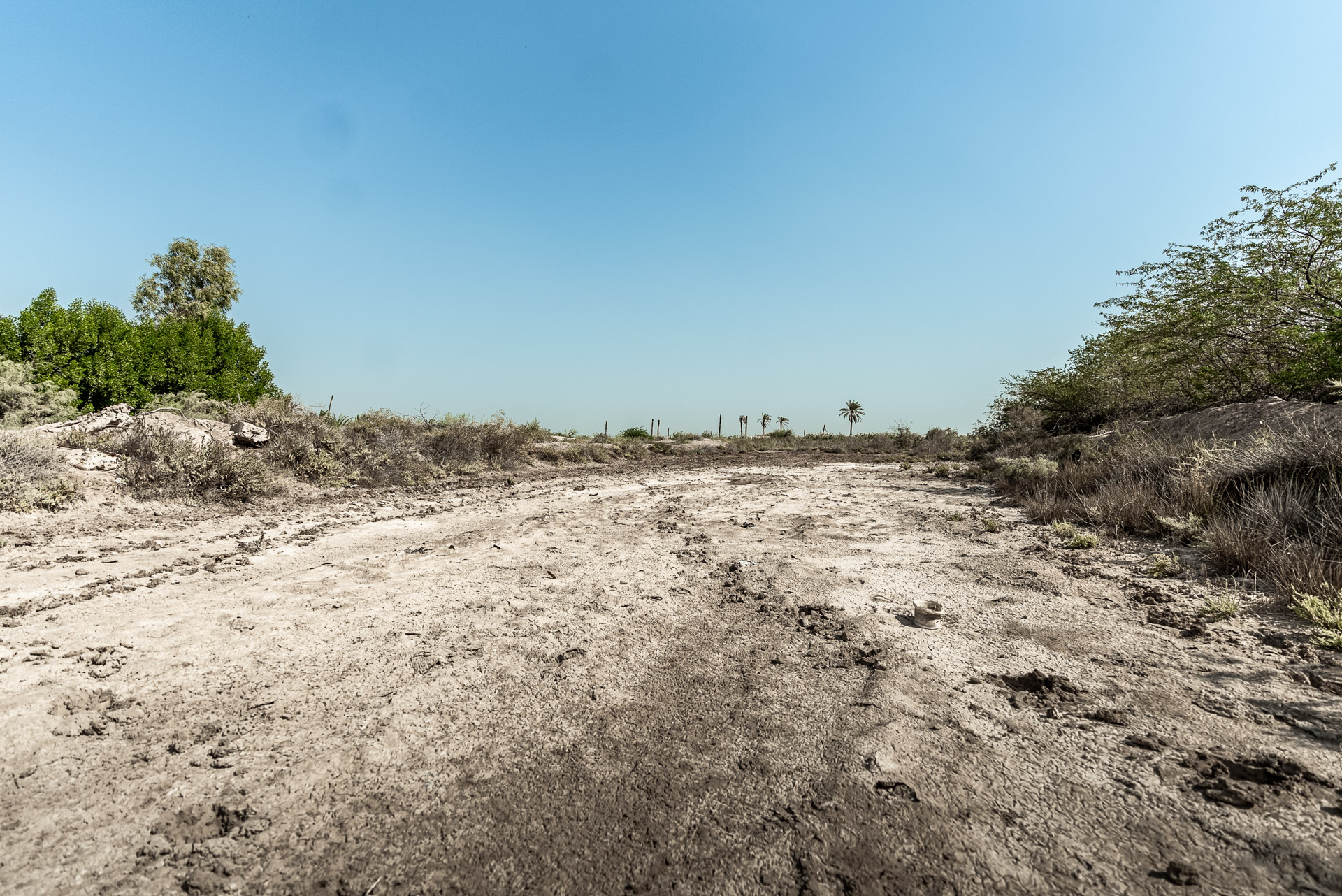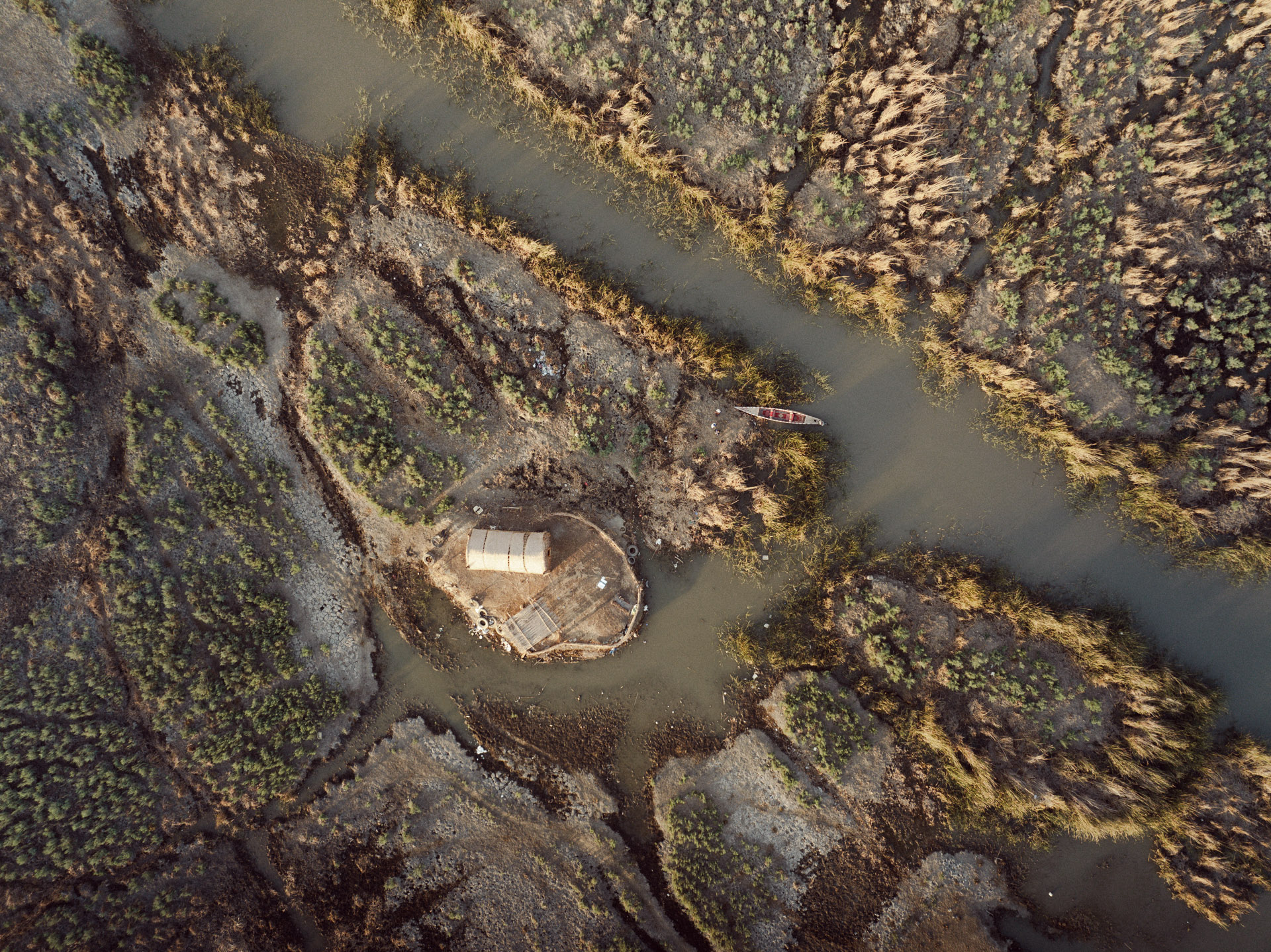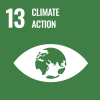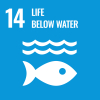Iraq, 28 November 2023 – In recent years, a silent enemy has been making its way into southern Iraq. Low levels of water flow from the Tigris and Euphrates rivers, which converge in the lowlands of Basra, have failed to push back the tidal wave of salty seawater inching northward. This creeping saltwater is destroying countless palm groves, citrus trees, and other agricultural crops in its path, that have flourished for millennia, thanks to the shade provided by the palm trees, protecting them from the scorching sunlight.
Adnan Khdheir Al-Sinafi, from Al-Bihar district in Iraq’s southernmost governorate, Basra, has worked on this palm grove his entire life, as his ancestors did for generations. Adnan and many others like him have found themselves faced with two choices: to stay and persist – which has often resulted in big losses for the farmers – or to leave in search of livelihoods elsewhere.
Adnan has tried both. And if action is not taken now, this will most likely be the inevitable destiny of many more in the coming years as conditions become increasingly volatile in Iraq due to climate change.

The seawater tide leaves behind a white crust on anything that it touches, a testament to its salt density. Photo: IOM Iraq 2023/Raber Aziz

Low levels of water in the Tigris and Euphrates have not just allowed sea water to move up, they have also dried up many streams. This location used to be a fish market where fishing boats returning from the Shat Al Arab with their daily catch would dock. Photo: IOM Iraq 2023/Raber Aziz
“This land was paradise. Sunlight did not reach the ground because of how densely packed the palm trees were. I planted citrus fruit trees in their shade, and we had more than 60 varieties of the highest quality dates, such as Al-Barhi, Sayer, Gintar and Balyani,” Adnan recalls.
“With increasing salinity, I saw how my trees died and the land degraded gradually. I kept trying, and I kept farming every year, but all my efforts failed. I lost about 45 million Iraqi dinars (USD 30,000).”

Adnan stands in front of the land that he had to sell due to degradation caused by salinity. Photo: IOM Iraq 2023/Raber Aziz
This story of loss and heartbreak is not unique. Countless farmers like Adnan share the same fate, with very few options left.
“All that is left now are dead trunks and stumps,” he adds.

Chebayesh marshlands in Thi-Qar Governorate are some of the most affected by climate change, and desertification is moving at an alarming rate. Photo: IOM Iraq 2023/Anjam Rasool
Further north, in Thi-Qar Governorate, the marshes are drying up due to low levels of water in the Tigris and Euphrates rivers caused by decreased rainfall; the construction of dams in neighbouring Türkiye and Iran on the rivers or their tributaries; and an absence of sustainable management of water resources locally. These marshes were famous for their biodiversity, sustained communities and their livestock and fishing practices, dating back to ancient Mesopotamia.

Dr Wisam spent his whole childhood in the marshlands of Chebayesh, the preservation of which has become his life's mission. Photo: IOM Iraq 2023/Anjam Rasool
“The water scarcity and salinity has caused degradation of the ecosystem and biodiversity of the fauna and flora in this area,” says Dr Wisam Kadhim Sankour Al-Asadi. Born and raised in the Chebayesh marshes, he now works with the Iraqi Green Climate Organization, a local NGO dedicated to preserving the marshes, on building resilience in marshland communities in the face of climate change.
“The number of buffalo and fish has decreased dramatically in recent years, which has caused many people to lose their livelihoods,” he adds. “In 10 years, the landscape of the marshlands will change forever. We already see it unfolding before our eyes …the marshes are gradually going extinct.”

Chebayesh has been reduced from vast, lush marshlands to mere, shallow streams surrounded by dry lands. Photo: IOM Iraq 2023/Anjam Rasool
But the impact of climate change runs deeper. Rural-urban migration in response to environmental degradation and natural hazards is rising at an alarming rate as families seek employment in urban areas or are forced to send their children to work in cities to cope with the loss of income.
“Climate change in Iraq is not just an environmental problem. It has the potential to become a humanitarian crisis. It fuels exploitation and contributes to forced mobility. We must act now to avert, minimize and address the impacts of climate change. The consequences of inaction are dire for countless people,” says IOM Iraq’s Chief of Mission, Giorgi Gigauri.
IOM’s Climate Emergency Tracking in Iraq has recorded displacement of more than 130,000 people between 2016 and September 2023 due to the adverse effects of climate change in their areas of origin. Ten locations assessed in Thi-Qar for a new IOM Climate Vulnerability Assessment – published in November 2023 – have been completely abandoned. Most of these abandoned locations are in Thi-Qar, particularly in Nassriya and Suq Al-Shoyokh districts.

Portion of the original population displaced due to environmental factors. Source: IOM Iraq, Drivers of Climate-Induced Displacement in Iraq: Climate Vulnerability Assessment
IOM in Iraq has been working closely with national and local partners to address the adverse impact of climate change since 2018. IOM’s water infrastructure projects have connected over 1 million people to safe and accessible water for drinking and agriculture. IOM support to sustainability-oriented small and medium agricultural enterprises has created over 1,600 jobs; and business start-up funds and development packages have helped 2,200 small-holder farmers better adapt to climate change.

Farmers in southern Iraq receive grants that not only allow them to continue their agricultural practices, but also to purchase required equipment to pivot towards smart agriculture in order to adapt to water shortages. Photo: IOM Iraq/Raber Aziz, 2023

Jassim Mohammed Ghafla has been working in farming since he was 15 years old. His family has worked in farming for generations. He is one of the few who have explored ways to adapt to the water scarcity and salinity in the marshlands, with the support of IOM. Photo: IOM Iraq/Anjam Rasool, 2023

Aerial shot in Al-Zubair, Basra Governorate, showing the key role smart agriculture plays in responding to climate change: the top part has turned into a lifeless desert and degraded because of neglect; the bottom part keeps the soil from degrading and keeps yielding produce after receiving support from IOM. Photo: IOM Iraq/Anjam Rasool, 2023
The scale of the impact is much greater than any one organization can reverse. As the Government of Iraq implements its strategy for climate action, collaboration between the international community, government partners, civil society, private sector, and the country’s diversity of communities is imperative.
Investments in climate-smart infrastructure; equitable land and water management systems and policies; sustainable and diversified livelihood opportunities; as well as early warning systems and disaster preparedness are crucial for reducing vulnerabilities and building resilience at both the local and national levels.
While the reality may seem grim for Iraq, this is not a story of loss. The fight is not over just yet, and it is not too late to mitigate the impact of climate change in Iraq – together. Ahead of COP28, this is a rallying cry for broader and more concerted efforts at the national and regional levels. For this is not a local crisis, but a global one, and demands immediate action.
This story was written by Raber Aziz, Media and Communications Officer with IOM Iraq.



